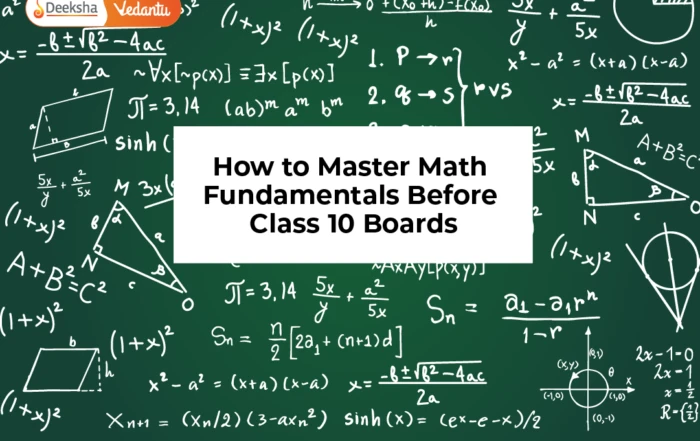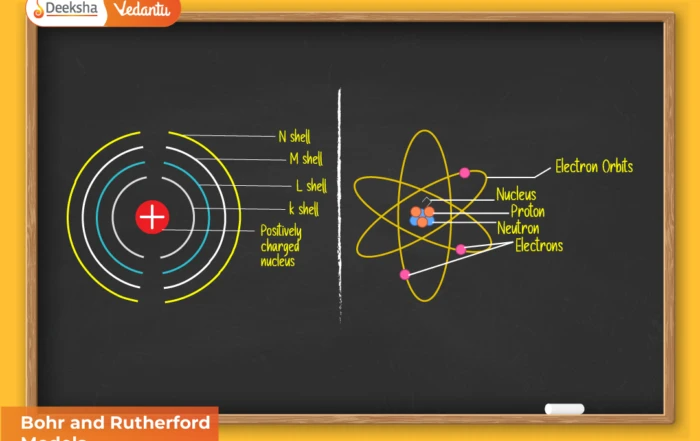
Introduction
The Fundamental Principle of Counting (FPC) is the backbone of all problems in permutations, combinations, and probability. Whenever a task is carried out in a sequence of steps, and each step can be completed in a certain number of ways, FPC allows us to calculate the total number of possible outcomes.
This principle eliminates the need to list all possibilities manually (which becomes impossible in large cases). Instead, it gives us a general mathematical tool to count efficiently.
The Idea of Counting
Suppose you are ordering food:
- For the main course, you have 3 choices.
- For dessert, you have 2 choices.
If you list all possibilities, you’ll find there are 3 × 2 = 6 different meal combinations. Instead of writing them out, the FPC immediately gives the answer.
This simple multiplication extends to complex arrangements, selections, and probability problems.
The Rules of Counting
1. Rule of Multiplication (Product Rule)
If a task consists of k independent steps, where:
- Step 1 can be performed in n₁ ways
- Step 2 can be performed in n₂ ways
- Step 3 can be performed in n₃ ways
- Step k can be performed in nk ways
Then the total number of outcomes is:
n₁ × n₂ × n₃ × … × nk
Example 1:
A 2-digit number is to be formed using digits 1, 2, 3, 4 (no repetition).
- Choice for the first digit = 4
- Choice for the second digit = 3
Total = 4 × 3 = 12 numbers.
Example 2 (Exam-oriented):
Number of 4-digit numbers that can be formed using digits 0–9 (digits can repeat).
- First digit: 9 choices (1–9, since a 4-digit number cannot start with 0)
- Remaining three digits: 10 choices each
Total = 9 × 10 × 10 × 10 = 9000 numbers.
2. Rule of Addition (Sum Rule)
If there are two or more mutually exclusive tasks, and:
- Task 1 can be done in m ways
- Task 2 can be done in n ways
Then either Task 1 or Task 2 can be done in m + n ways.
Example 1:
A student can choose either a science project (3 options) or a math project (4 options).
Total = 3 + 4 = 7 options.
Example 2:
A train leaves a city in 3 ways and a bus leaves in 2 ways. If a traveler can choose either train or bus, then total choices = 3 + 2 = 5.
3. Mixed Use of Rules
Many problems involve both addition and multiplication rules.
Example (JEE level):
In an exam, a student must answer 2 questions:
- From Section A: 3 choices
- From Section B: 4 choices
He can attempt one from each section.
Ways = 3 × 4 = 12.
If instead he could choose from either section, then total ways = 3 + 4 = 7.
Exam Strategy & Time-savers
- Stage-plan first, then multiply – prevents formula misfires.
- For “at least one” constraints, think complement.
- For divisible by 5, isolate last digit 0/5 and handle first-digit constraints.
- For “A left of B”, symmetry trick: half the permutations.
- When order doesn’t matter inside a stage (choose 2 from 5), either use nCr or use product rule and divide by overcount.
- Always check for forbidden overlaps (leading 0, adjacency, repeats).
Factorials in Counting
Counting problems often reduce to factorial expressions.
Example: Number of ways to arrange n distinct objects = n!
- For n = 4 (A, B, C, D) → 4! = 24.
This directly comes from applying FPC repeatedly:
- Step 1: 4 choices
- Step 2: 3 choices
- Step 3: 2 choices
- Step 4: 1 choice
Multiply = 4 × 3 × 2 × 1 = 24.
Fundamental Principle of Counting – Worked Examples Set
Quick Recap (10 seconds)
- Product Rule (Multiplication): A task with k independent stages, with n₁, n₂, …, nₖ ways each → total ways = n₁ × n₂ × … × nₖ.
- Sum Rule (Addition): Mutually exclusive choices with m and n ways → total = m + n.
- If a restriction forbids overlap (e.g., starts with 0 is not allowed), remove those cases using the rule carefully.
Part A – Straight to the point (Warm-ups)
Example 1 (Digits; repetition allowed)
How many 4-digit numbers can be formed using digits 0–9 if repetition is allowed?
Stage plan:
- 1st digit: 9 ways (1–9)
- Each of the remaining 3: 10 ways
Total: 9 × 10 × 10 × 10 = 9000
Example 2 (Digits; no repetition)
How many 4-digit numbers can be formed from digits 0–9 if no digit repeats?
Stage plan:
- 1st digit: 9 ways (1–9)
- 2nd: 9 ways (0 plus 8 remaining nonzero digits)
- 3rd: 8 ways
- 4th: 7 ways
Total: 9 × 9 × 8 × 7 = 4536
Exam note: The “first digit ≠ 0” filter is the classic trap.
Example 3 (PIN codes)
A PIN has 4 digits (0–9), repetition allowed. How many PINs?
10 × 10 × 10 × 10 = 10,000
Example 4 (Letters + digits, pure FPC)
A password has 3 letters (A–Z) followed by 2 digits (0–9), repetition allowed.
Letters: 26 × 26 × 26; digits: 10 × 10
Total: 26³ × 10² = 1,757,600
Part B – With restrictions
Example 5 (Even numbers; no repetition)
How many 4-digit even numbers can be formed from digits 1–6 without repetition?
- Last digit must be even: {2,4,6} → 3 ways
- First digit: choose from remaining 5 digits (can include 1,3 and the two unused even digits) → 5 ways
- 2nd, 3rd digits: 4 ways, then 3 ways
Total: 3 × 5 × 4 × 3 = 180
Example 6 (Starts with vowel; repetition allowed)
How many 5-letter strings from English letters start with a vowel?
- 1st letter: 5 ways (A, E, I, O, U)
- Remaining 4: 26 ways each
Total: 5 × 26⁴
Example 7 (At least one restriction via complementary counting)
How many 6-digit numbers (0–9, repetition allowed) contain at least one 0?
- Total 6-digit numbers: 9 × 10⁵ (first digit 1–9)
- Numbers with no 0 at all: 9 × 9⁵ (first digit 1–9; others 1–9)
Answer: (9 × 10⁵) − (9 × 9⁵) = 9(10⁵ − 9⁵)
Why complementary? “At least one” is easiest as total − none.
Example 8 (Starts/ends with consonant; no repetition)
How many 4-letter strings from A–Z start and end with a consonant, with no letter repeated?
- Consonants = 21, vowels = 5
- 1st: 21 ways
- 4th: 20 ways (a different consonant)
- 2nd & 3rd: from remaining 24 then 23 letters → 24, 23
Total: 21 × 24 × 23 × 20
Part C – Addition vs Multiplication (identify correctly)
Example 9 (Either/or choices – Sum Rule)
A student picks an elective: either 4 choices in Art or 6 choices in CS.
Total: 4 + 6 = 10
Example 10 (Both stages – Product Rule)
A lunch combo: choose one main (5 ways) and one drink (3 ways).
Total: 5 × 3 = 15
Example 11 (Mixed use)
A test has Section A (3 Qs; choose 1) and Section B (5 Qs; choose 2 distinct).
- From A: 3 ways
- From B: number of unordered pairs = 5C2 = 10 (but if you haven’t introduced combinations yet, think “pick first then second” = 5 × 4 then divide by 2! to avoid order overcount)
Total: 3 × 10 = 30
Teaching tip (FPC first): show both-stage multiplication; mention overcount correction if order ignored.
Part D – Phone, plates, IDs, and patterns
Example 12 (License plates)
Format: 2 letters followed by 4 digits (0–9), repetition allowed.
- Letters: 26²
- Digits: 10⁴
Total: 26² × 10⁴
Example 13 (Alphanumeric IDs; mixed blocks)
ID: 1 uppercase letter, 1 lowercase letter, 2 digits, 1 symbol from {#, @, $, &}, repetition allowed.
26 × 26 × 10 × 10 × 4 = 270,400
Example 14 (No leading zero; internal zeros allowed)
How many 7-digit numbers (repetition allowed) begin with a nonzero and end with an odd digit?
- First digit: 9 ways (1–9)
- Middle 5: 10⁵
- Last digit odd: 5 ways (1,3,5,7,9)
Total: 9 × 10⁵ × 5 = 4,500,000
Part E – Seating & arrangement without going deep into permutations
(We’ll still keep it FPC-driven, not invoking formulas prematurely.)
Example 15 (Linear seating; distinct people)
In how many ways can 5 students sit in a row?
- First seat: 5 choices
- Next: 4, then 3, 2, 1
Total: 5 × 4 × 3 × 2 × 1 = 120 (i.e., 5!)
Example 16 (Line with a restriction)
5 students in a row; A must be at an end.
- Place A at left or right end: 2 ways
- Arrange the remaining 4 in the other seats: 4! = 24
Total: 2 × 24 = 48
Example 17 (Block method – two must sit together)
5 in a row; B and C together (as a block).
- Treat (BC) as one unit: now 4 units to arrange → 4! = 24
- Inside the block, BC or CB → 2 ways
Total: 24 × 2 = 48
FPC lens: “Make a block” reduces stages; multiply across steps.
Part F – Casework & complementary counting
Example 18 (Even numbers; 0 allowed; careful casework)
How many 5-digit even numbers can be formed from digits 0–9 with no repetition?
Approach by parity of last digit:
- Case 1: Last digit = 0
- Last: 0 fixed (1 way)
- First: 1–9 (9 ways)
- Remaining 3: choose from 8, then 7, then 6 → 8 × 7 × 6
- Count: 1 × 9 × 8 × 7 × 6 = 9 × 336 = 3024
- Case 2: Last digit = one of {2,4,6,8} (4 ways)
- Choose last: 4 ways
- First: 1–9 except chosen last (8 ways; 0 permitted here? No, 0 cannot be first)
- Remaining 3: from 8,7,6
- Count: 4 × 8 × 8 × 7 × 6 = 32 × 336 = 10,752
Total: 3024 + 10,752 = 13,776
Exam tip: This is a classic; many students forget the “first digit ≠ 0” in Case 2.
Example 19 (At least one vowel – complementary)
How many 6-letter strings (A–Z, repetition allowed) contain at least one vowel?
- Total strings: 26⁶
- No-vowel strings: 21⁶
Answer: 26⁶ − 21⁶
Example 20 (At least one digit 7 – multi-stage number)
How many 4-digit numbers (1–9 only, repetition allowed) contain at least one 7?
- Total: 9⁴
- Without 7: 8⁴
Answer: 9⁴ − 8⁴
Part G – Multi-section papers and selection logic (FPC + careful reading)
Example 21 (Choose with minimum constraints)
A paper has Section A (5 Qs) and Section B (6 Qs). Attempt 5 questions total with at least 2 from Section A. How many ways (order of answering doesn’t matter)?
Break by how many from A:
- Take 2 from A and 3 from B: 5C2 × 6C3
- Take 3 from A and 2 from B: 5C3 × 6C2
- Take 4 from A and 1 from B: 5C4 × 6C1
- Take 5 from A and 0 from B: 5C5 × 6C0
Total: 5C2·6C3 + 5C3·6C2 + 5C4·6C1 + 5C5·6C0
FPC viewpoint: different cases are mutually exclusive → sum rule, each case’s internal selection is product rule across stages.
Example 22 (Either/or with overlaps)
A student can participate in Math Club (4 ways to qualify) or Science Club (5 ways to qualify). If 1 way overlaps (counts for both), how many distinct ways to qualify for at least one club?
Use inclusion–exclusion: 4 + 5 − 1 = 8
Even before formal inclusion–exclusion is taught, this is just “avoid double-counting the overlap”.
Part H – Password & security patterns (exam favorite)
Example 23 (Strong password rule)
Passwords: length 6, must contain at least one letter and at least one digit. Characters allowed: 26 letters + 10 digits. Repetition allowed. How many passwords?
- Total (no restriction): 36⁶
- No letters (digits only): 10⁶
- No digits (letters only): 26⁶
Answer: 36⁶ − 10⁶ − 26⁶
Example 24 (Position-based constraints)
A badge code is Letter–Letter–Digit–Digit–Digit, with no adjacent repeated characters (e.g., AA not allowed, 11 not allowed consecutively). How many?
- 1st letter: 26
- 2nd letter: 25 (anything but the 1st)
- 3rd digit: 10
- 4th digit: 9 (anything but the 3rd)
- 5th digit: 9 (anything but the 4th)
Total: 26 × 25 × 10 × 9 × 9
Part I – Mini mixed drill (with quick solutions)
Q1. Number of 3-digit numbers with distinct digits (0–9).
A: First digit: 1–9 (9); second: 9; third: 8 → 9 × 9 × 8 = 648
Q2. 7-character strings from A–Z that start with S or T and end with a vowel (repetition allowed).
A: Start: 2 choices; middle 5: 26⁵; end: 5 vowels → 2 × 26⁵ × 5
Q3. 5-letter strings with exactly one vowel (A–Z; repetition allowed).
A: Choose position of the vowel: 5; choose the vowel: 5; other 4 positions consonants: 21⁴ → 5 × 5 × 21⁴
Q4. 4-digit numbers divisible by 5 (0–9; repetition allowed).
A: Last digit must be 0 or 5 → 2 ways; first digit 1–9 (9); middle two digits 10 each → 9 × 10 × 10 × 2 = 1800
Q5. Arrange the letters of “BALLOON”.
A: 7 letters; L×2, O×2 → 7! / (2!·2!) = 1260
Real-Life Examples
- Seating Arrangements – Number of ways n people can sit in a row or circle.
- Exams – Choice of sections, optional questions, multiple-choice questions.
- Computer Science – Generating PINs, passwords, and codes.
- Sports – Forming teams, arranging batting order.
- Business – Counting product combinations in catalogs.
Error log – Top 8 pitfalls (to drill out)
- Letting the first digit be 0 in a number.
- Mixing sum vs product rules.
- Forgetting complementary counting for “at least one …”.
- Overcounting when order doesn’t matter (pairs chosen twice).
- Ignoring mutual exclusivity: adding when overlap exists.
- Missing no-adjacent-same type constraints.
- Not splitting into exhaustive cases (e.g., last digit even and =0 vs ≠0).
- Using formulas blindly; always stage-plan and multiply.
Marks Breakdown in Exams
- CBSE Boards (Class 11 & 12): ~6 marks (direct applications, often in MCQ or short-answer).
- JEE Main: 1–2 questions (4–8 marks), often linked with permutations.
- JEE Advanced: 1 question, but integrated with probability or binomial theorem.
- KCET/COMEDK: 1–2 direct MCQs, usually simple applications of multiplication/addition rule.
Practice Set (Board + JEE/KCET blend)
- How many 5-digit numbers (0–9, no repetition) are divisible by 5?
- How many 8-letter strings (A–Z) contain at least one vowel and at least one consonant?
- A plate code: 2 letters (A–Z) then 3 digits (0–9), no repetition overall. Count the codes.
- From digits 1–7, how many 4-digit numbers can be formed (no repetition) that are greater than 5000?
- A school ID is L–D–L–D (L=letter, D=digit). No consecutive characters identical (i.e., two consecutive letters can be same letter? No; two consecutive digits can be same digit? No). Count possibilities.
- 6 students in a row; A must be to the left of B (not necessarily adjacent). Count.
- Binary strings of length 10 with at least one 0 and at least one 1.
- A test: Choose 6 questions from 10 with at most 2 from the last 4. (Order doesn’t matter.)
- 7-digit phone numbers (first digit nonzero) with no repeated digits.
- Number of 6-character passwords from lowercase letters only that avoid the substring “ab” (treat quickly using complementary counting idea: total − strings with “ab” at least once; inclusion–exclusion if time permits).
Quick Answers (sketches)
- Last digit 0 or 5; do careful casework with no repetition.
- 26⁸ − 21⁸ − 5⁸ (exclude all-consonant and all-vowel).
- 26 × 25 × 10 × 9 × 8.
- First digit choices: 5,6,7 (3 ways); then 6 × 5 × 4 → 3 × 6 × 5 × 4.
- 26 × 25 × 10 × 9 (since immediate neighbor can’t match the previous type’s character).
- Total 6! arrangements; half have A left of B → 6!/2 = 360.
- 2¹⁰ − 1 − 1 = 1024 − 2 = 1022.
- Choose from first 6 and last 4 with cases: pick 0,1,2 from last-4 and fill rest from first-6. Sum: 6C6·4C0 + 6C5·4C1 + 6C4·4C2 = 1 + 6×4 + 15×6 = 1 + 24 + 90 = 115.
- 9 × 9 × 8 × 7 × 6 × 5 × 4 = 9·9·8·7·6·5·4.
- Outline: total = 26⁶. Subtract strings with “ab” ≥ 1 using inclusion–exclusion on placements of “ab”.
FAQs
Q1. What is the difference between addition and multiplication rule?
Addition → mutually exclusive choices. Multiplication → independent sequential choices.
Q2. Why is FPC important in JEE?
Because it forms the base for permutations, combinations, and probability questions.
Q3. Can FPC be applied when choices are dependent?
No, the principle assumes independence unless restrictions are specified.
Q4. Do factorials always come from FPC?
Yes, factorials are a direct consequence of repeated multiplication rule.
Summary
- The Fundamental Principle of Counting (FPC) includes two rules:
- Multiplication Rule (when tasks are sequential and independent).
- Addition Rule (when tasks are mutually exclusive).
- Factorials are a natural outcome of repeated counting.
- Applications span numbers, arrangements, team selections, codes, and exam questions.
- For exams, mastering FPC ensures strong preparation for permutations, combinations, and probability.











Get Social